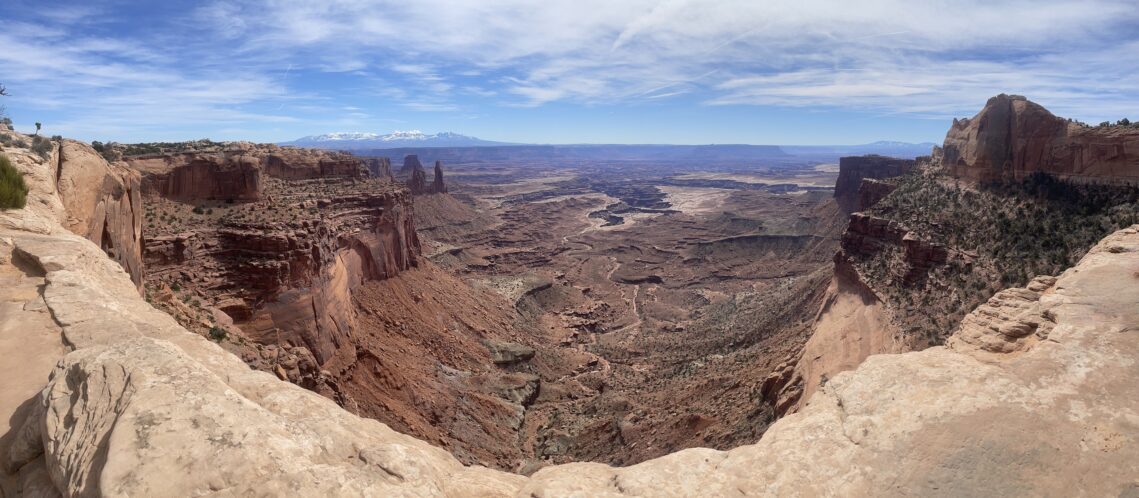Moab is lucky enough to be centrally located to two National Parks. Arches is in Moab itself and Canyonlands is a short drive away. Canyonlands is the largest national park in Utah and is divided by the Green and Colorado Rivers into three districts – Island in the Sky, The Needles, and The Maze. Covering such an expansive area, large sections of the park are remote and accessible only by 4 wheel drive (or not at all by vehicle).
The Maze is the most remote and therefore least visited of the three districts. Its rugged wilderness is attractive to experienced outdoorsmen but definitely not the right choice for everyone. The national park site states that “Visitors must be prepared for self-sufficiency and the proper equipment or gear for self-rescue.” That definitely is not us!
The Needles is named after the tall Cedar Mesa Sandstone spires that dominate its landscape. Located about 40 miles and 90 minutes south of Moab, it is more accessible than The Maze and less intimidating. But it is still primarily a backcountry experience and the majority of hikes in this area are full day or overnight commitments.
Island in the Sky is the most accessible area and definitely more our pace. A short 30 minute drive from Moab, this section of the park features a scenic (paved!) drive with panoramic overlooks and well-travelled hiking trails. Although there are still options for backcountry adventures, we found plenty to do without going off the beaten path.
Ironically, after spending a full day Arches National Park, our first stop in Canyonlands was also an arch. Mesa Arch is one of the park’s most iconic views and can be reached via a half mile roundtrip hike. The hike has some hills and stairs but for the most part is an easy walk on a sandy trail and across sections of slickrock. We opted to go counter-clockwise, which is apparently a slightly hillier route, but nothing compared to the hike to Delicate Arch in Arches National Park.
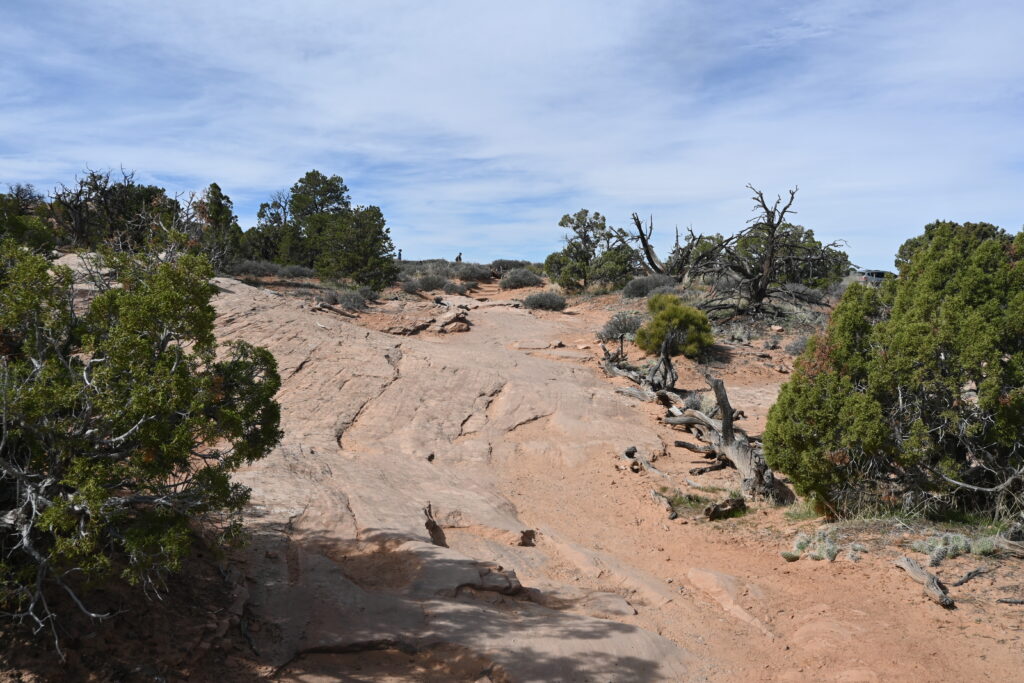
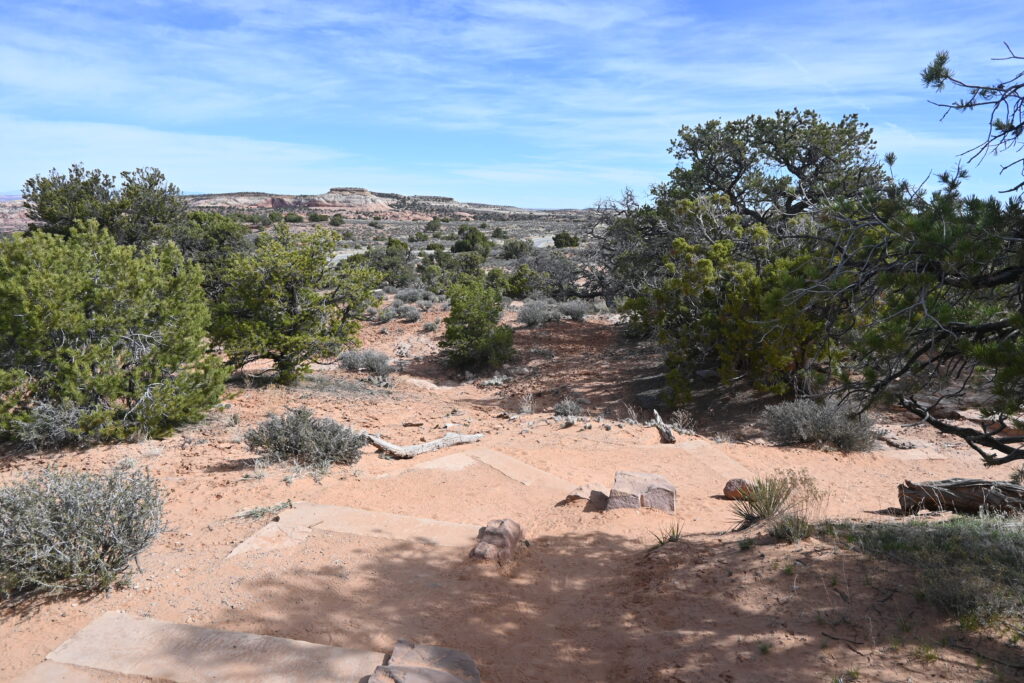
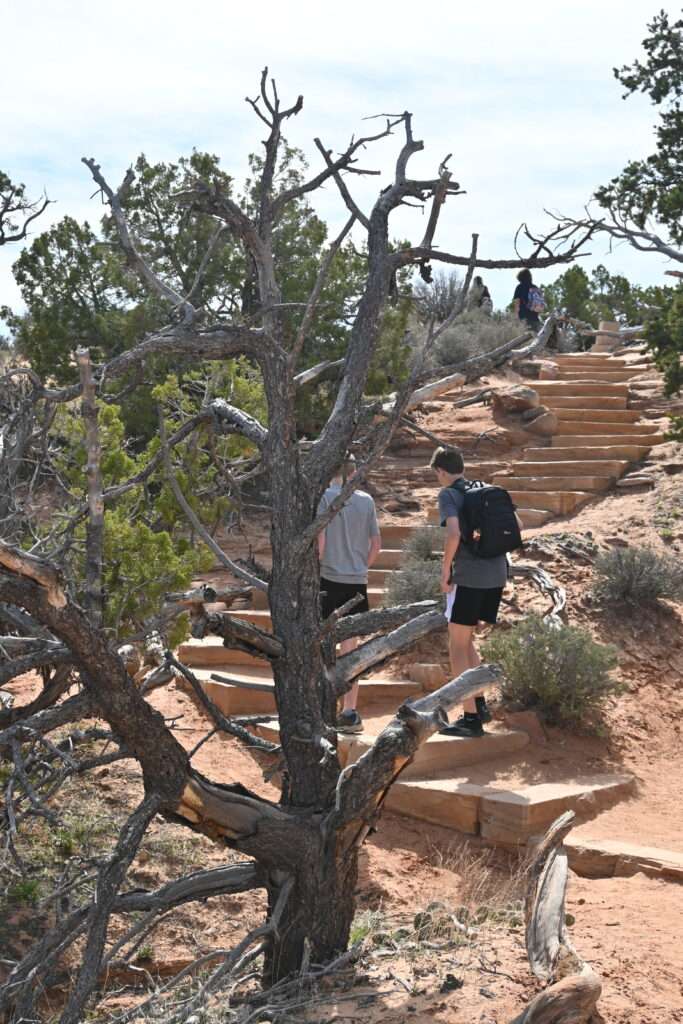
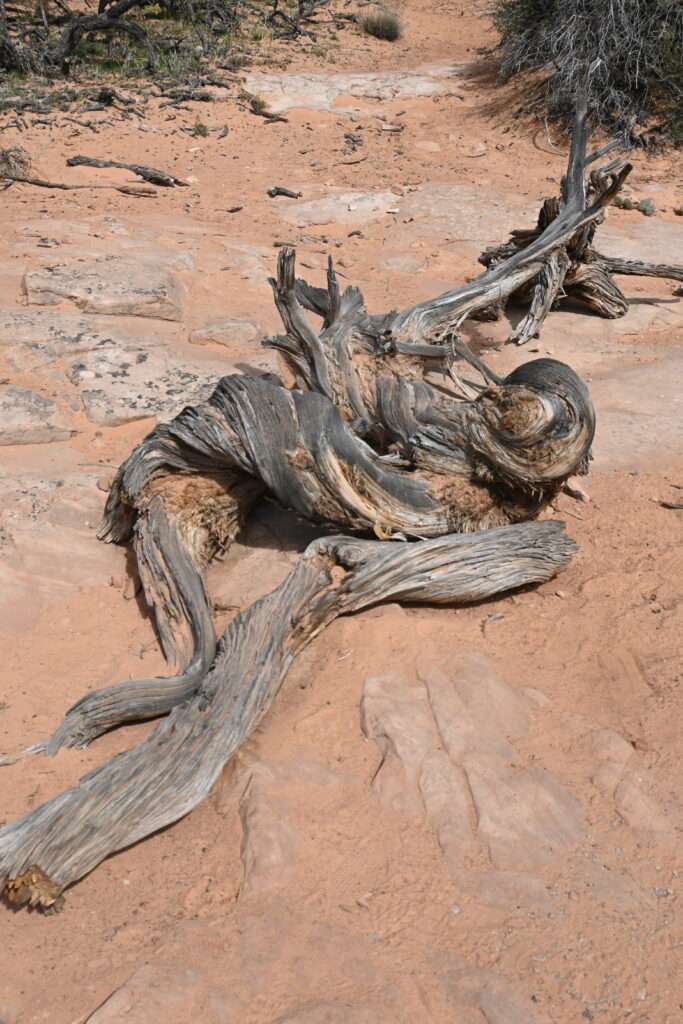
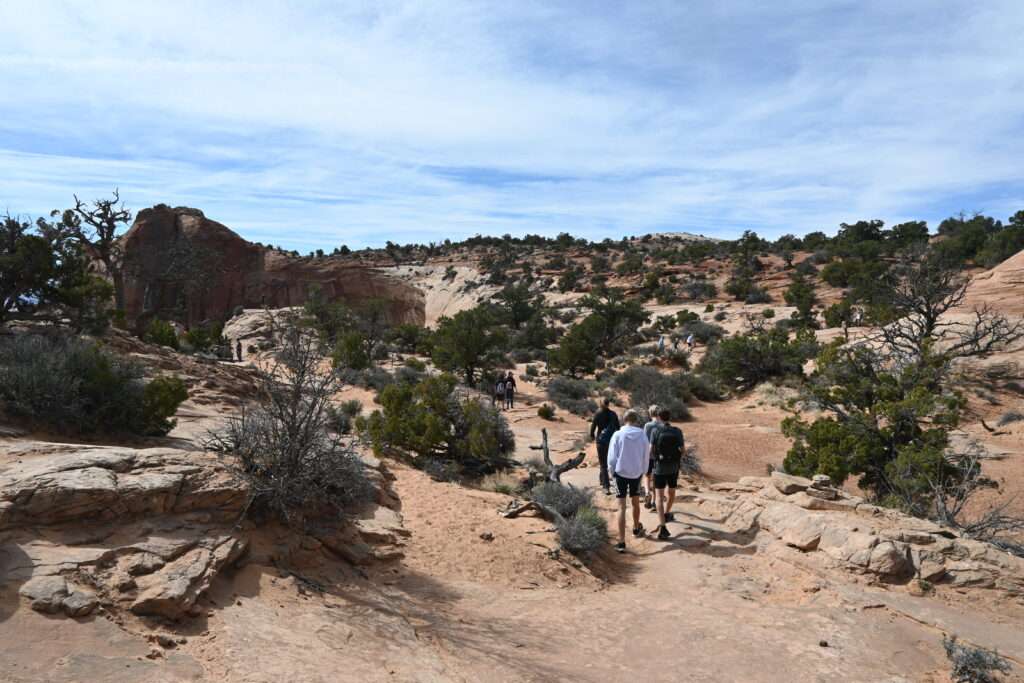
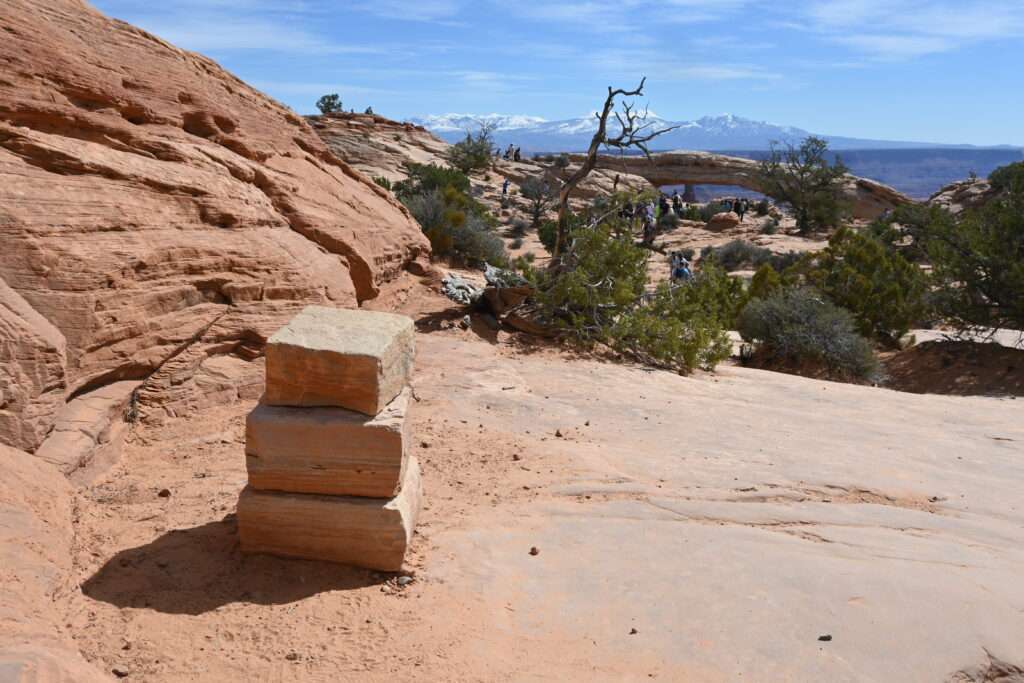
The 27 foot long Mesa Arch is impressive on its own as an arch but its location on the edge of the canyon really sets it apart from other arches. It creates a natural frame of the snowy La Sal Mountains in the distance and Buck Canyon below.
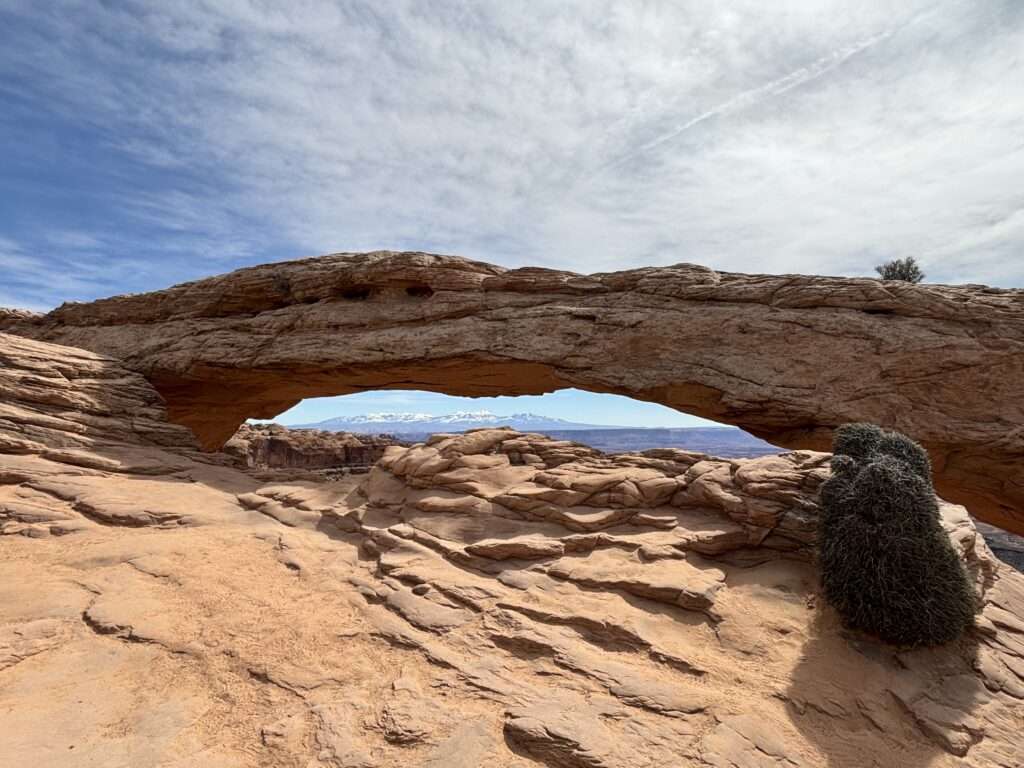
There is an immediate drop of 500 feet behind the arch and a total drop of 1200 feet to the bottom of Buck Canyon. (There are no guardrails behind the heavily photographed spot under the arch so be careful when posing for those family photos!) The canyon itself is amazing and it seems to have an endless number of layers for as far as the eye can see.
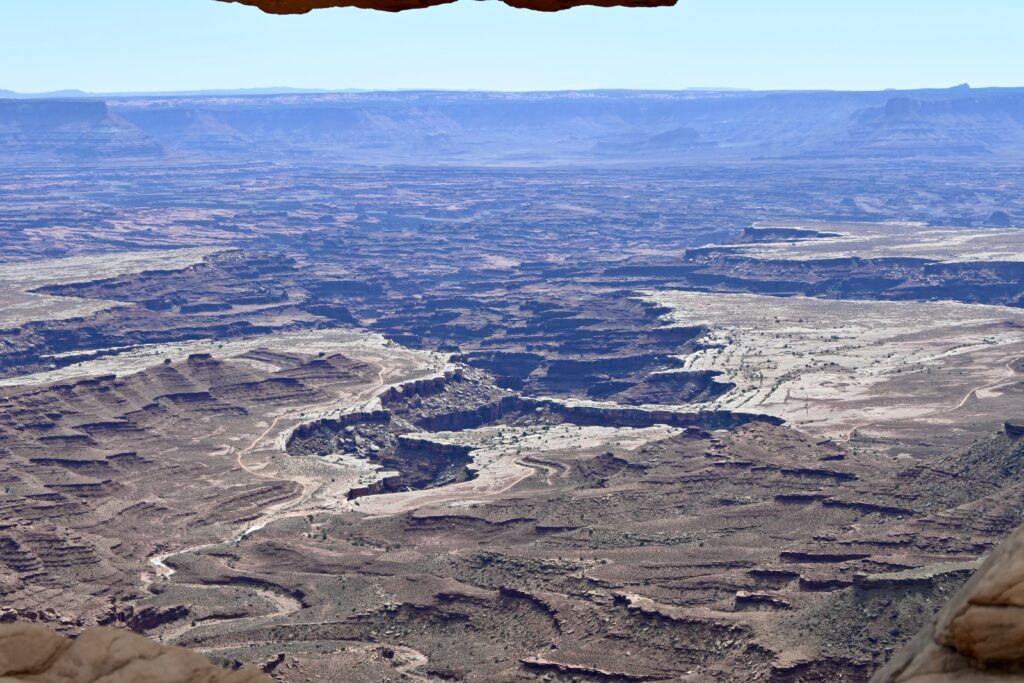
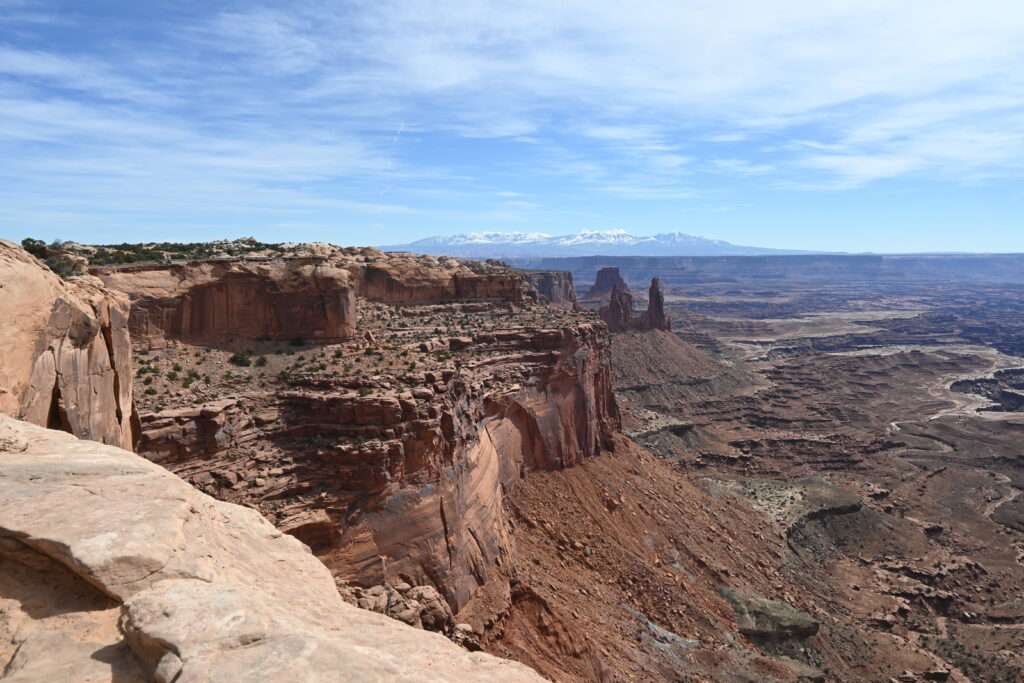
To the left of the arch, you can spot the 500 foot Washer Woman Arch in the distance. Sometimes these names can be a stretch but it isn’t hard to see the rock’s resemblance to a woman standing up washing clothes.
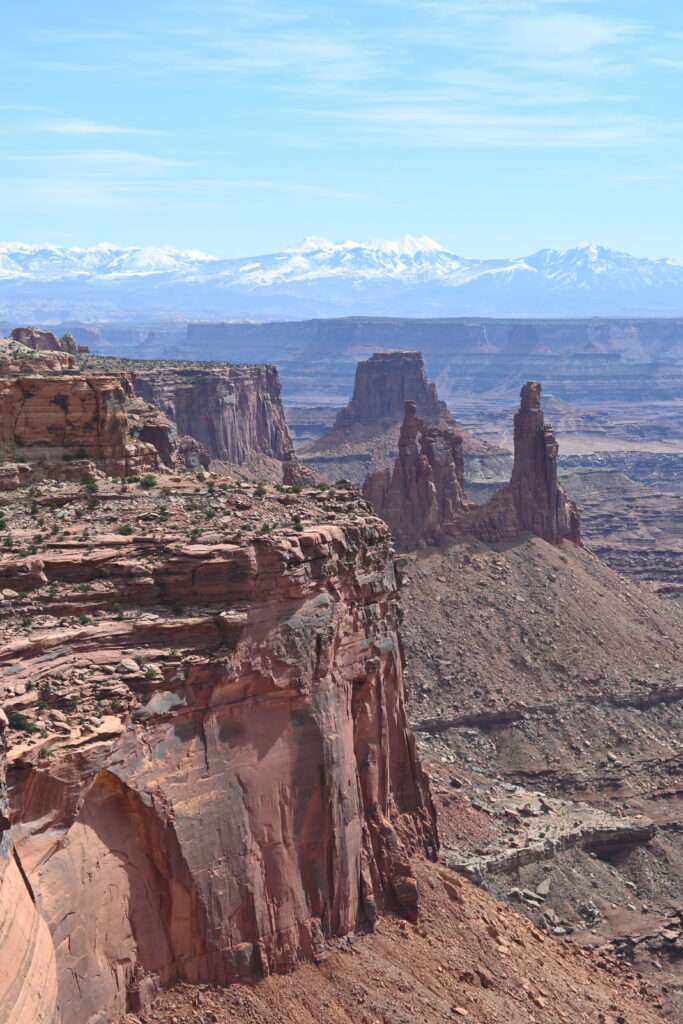
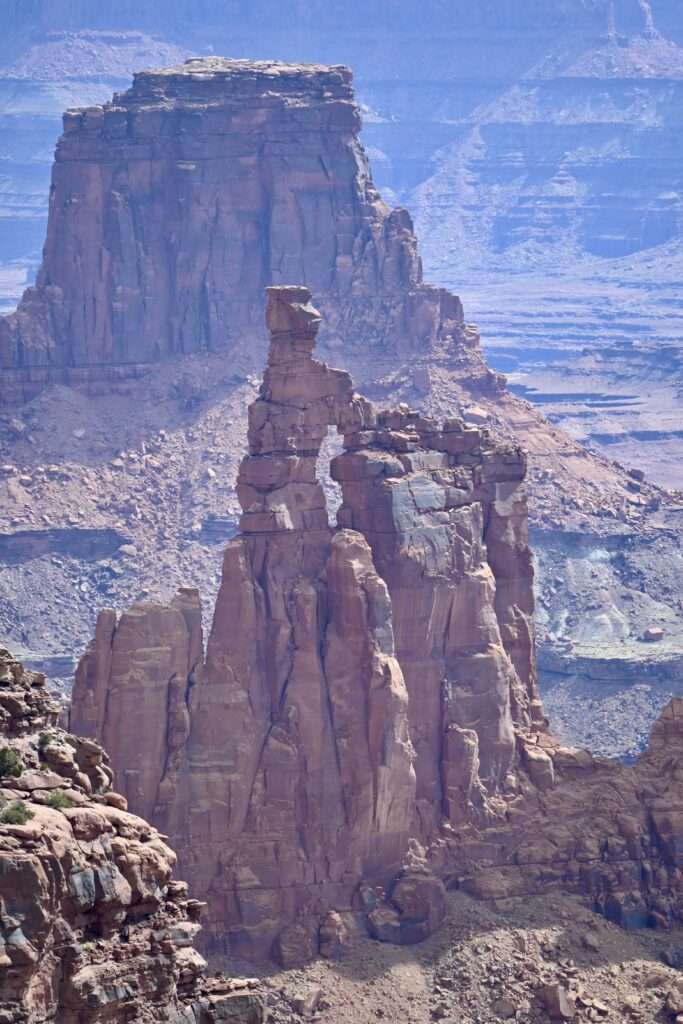
After spending ample time taking in the views, we headed back to the parking lot to continue our adventures in the park. Our next stop was Upheaval Dome, a mysterious crater of unknown origin. Scientists have long debated whether it was caused by a meteorite strike or a salt dome. Spanning three miles, the opening in the earth has a dome in the center surrounded by light and dark brown concentric rings.
A steep uphill climb takes you to two scenic overlooks – the first overlook is about a third of a mile from the trailhead and the second another half mile beyond that. It is a relatively quick but strenuous hike to the first overlook. Much to my oldest son’s chagrin, the group voted not to make the trek to the second overlook, as the vantage point didn’t look like it would be much different from the first.
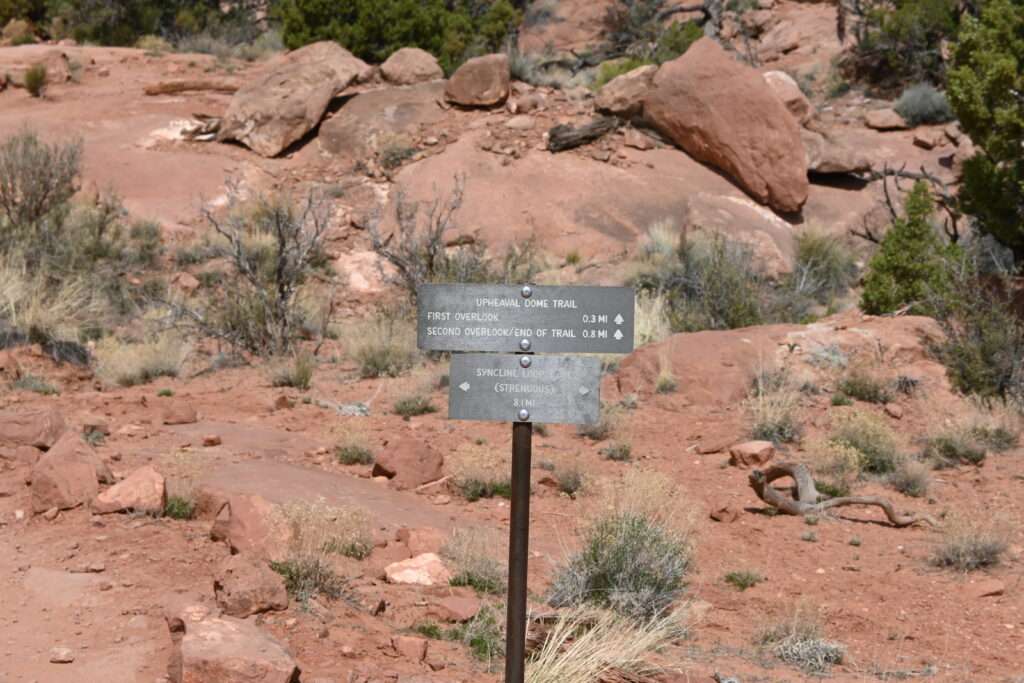
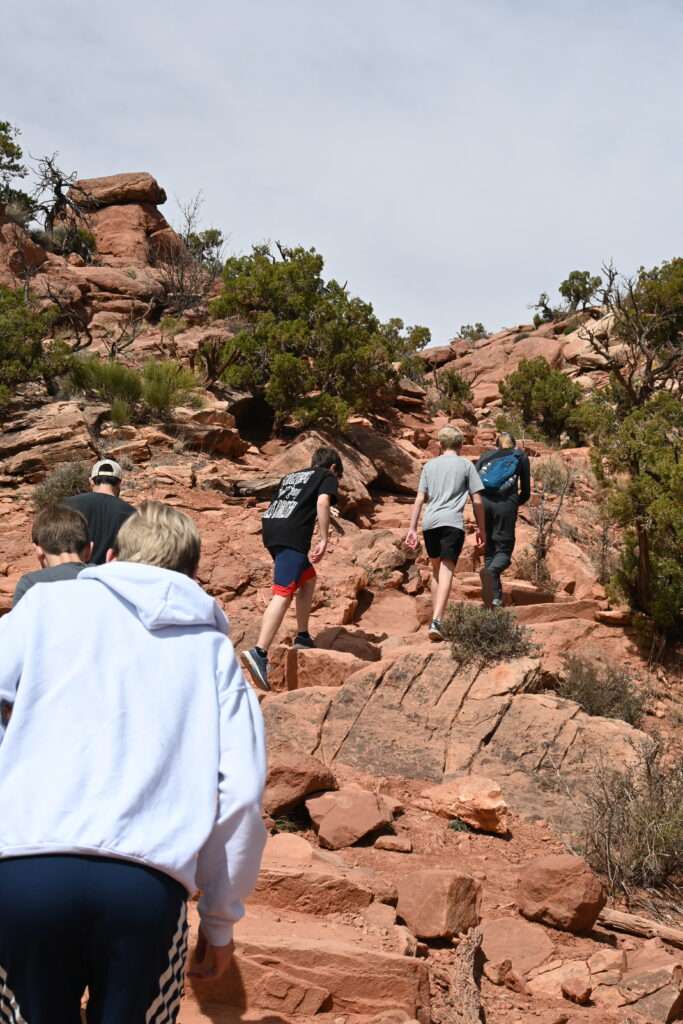
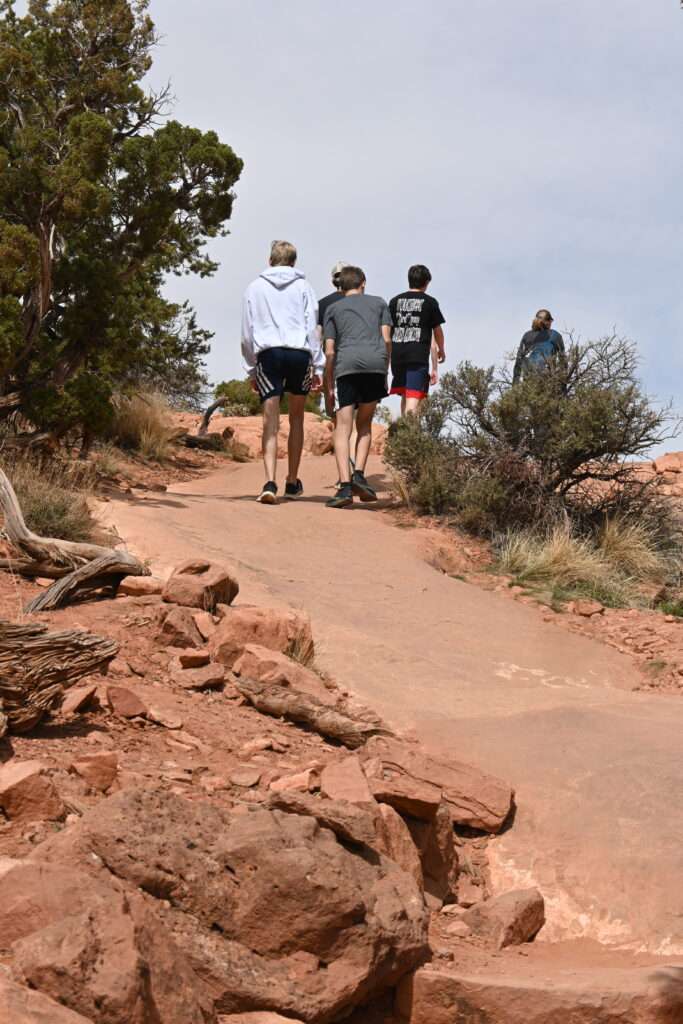
The dome was definitely a unique geologic site and much different than the other views into the canyons in the park. The shades of green in the center of the crater stood out in stark contrast to the red rocks in the background. You can see the dome in the center and make out the circles around it, but the concentric rings are much more obvious from an aerial view directly above the crater. There was a really informative sign at the lookout that explained the two theories of the origin on the crater.
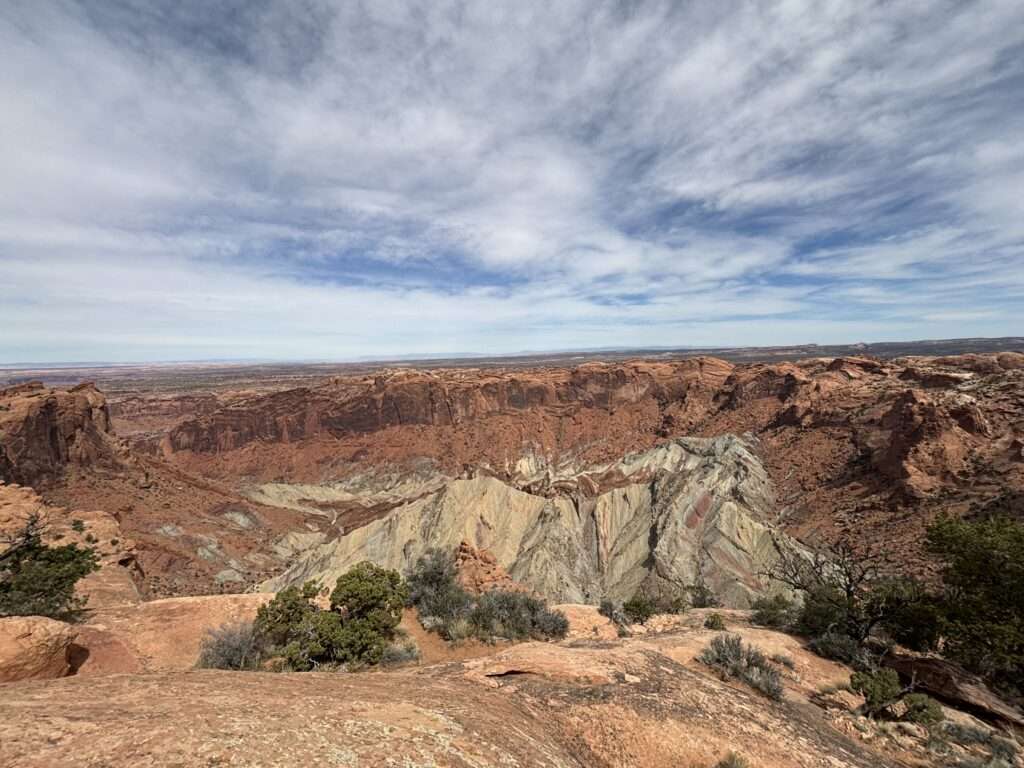
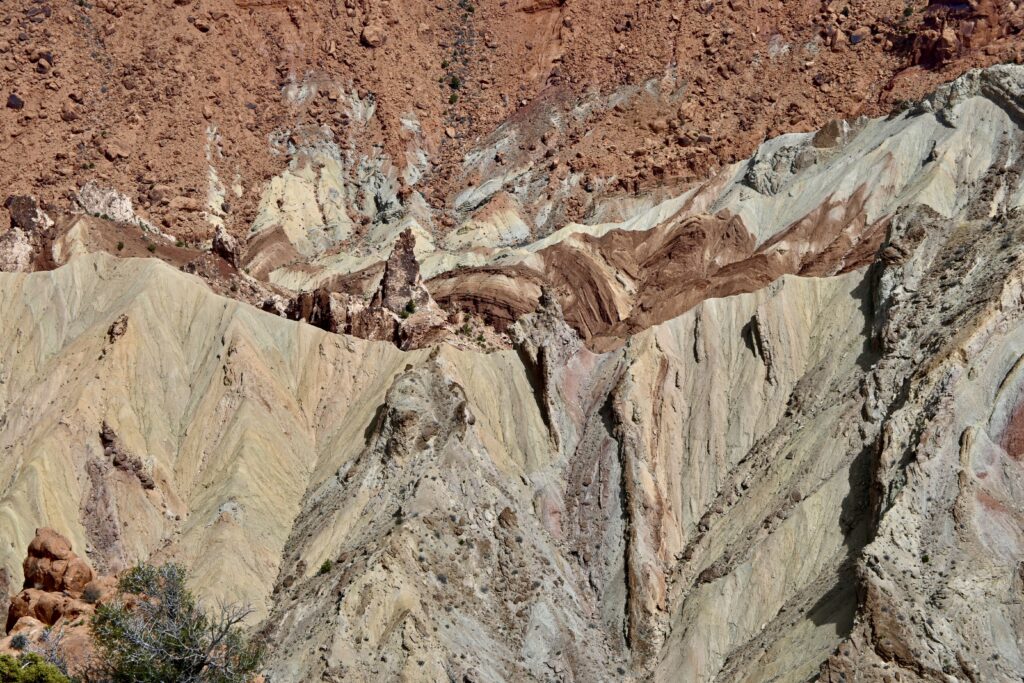
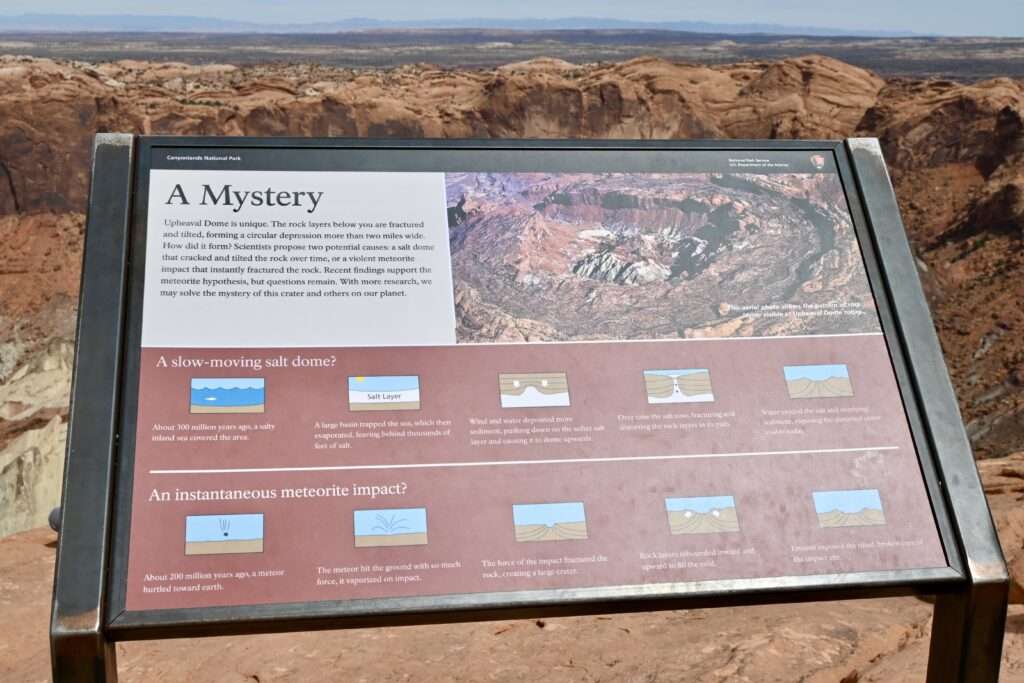
We made our way back down to the parking lot and ate lunch at the picnic tables before continuing on deeper into the Island in the Sky district. We pulled over at a few unofficial scenic overlooks before stopping at the Buck Canyon Overlook. With the ever-present La Sal Mountains in the background, the canyon looked like something from a movie where a large chasm in the ground is rapidly growing towards you, swallowing everything in its path. In reality of course, this canyon is millions of years in the making but the way that it ends in a point gives the impression that it is actively expanding.
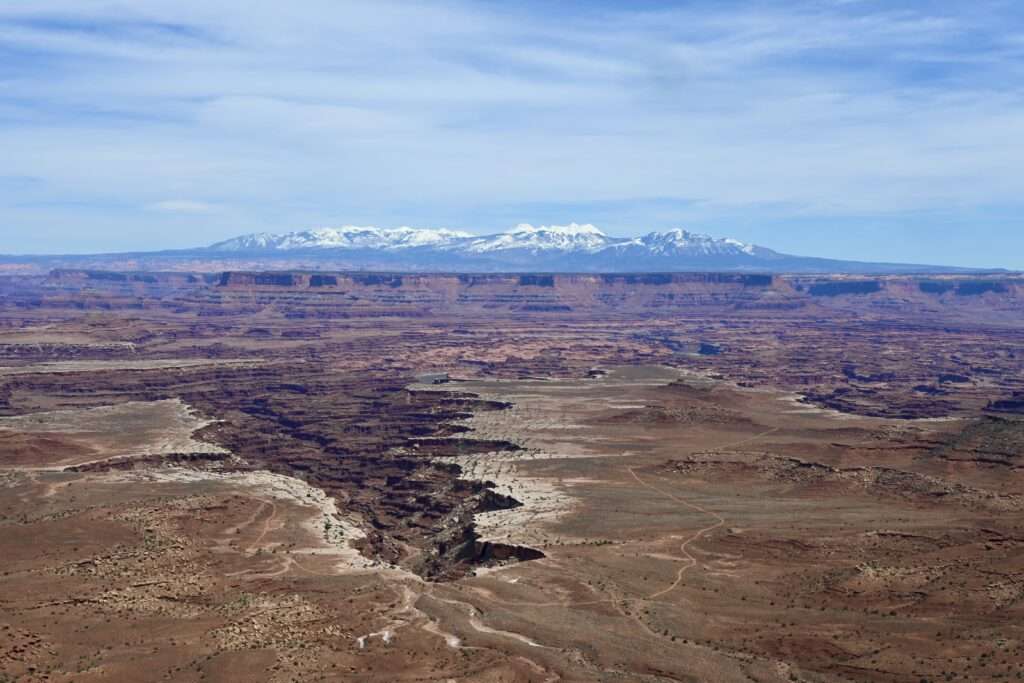
The finale of our visit to Canyonlands National Park was a stop at Grand View Point. With a name like that, it seemed like a fitting place to finish our visit. This was the only place in either of the national parks where we had difficulty parking. We had to circle several times and then park in a semi-space mostly in the dirt. From the parking lot, you can hike the 1 mile (one way) rim walk or the 300 feet to the overlook. Since we had a sunset jeep tour scheduled for the evening, we opted for the quick jaunt to the overlook.
The canyon from this vantage point looked like fingers spreading out. The land in the foreground was flat and led to a sharp dropoff into the canyon, where sandstone spires emerged from the bottom to heights as tall as the shelf of land along the edges. As so many other places in Arches and Canyonlands, it was stunningly beautiful.
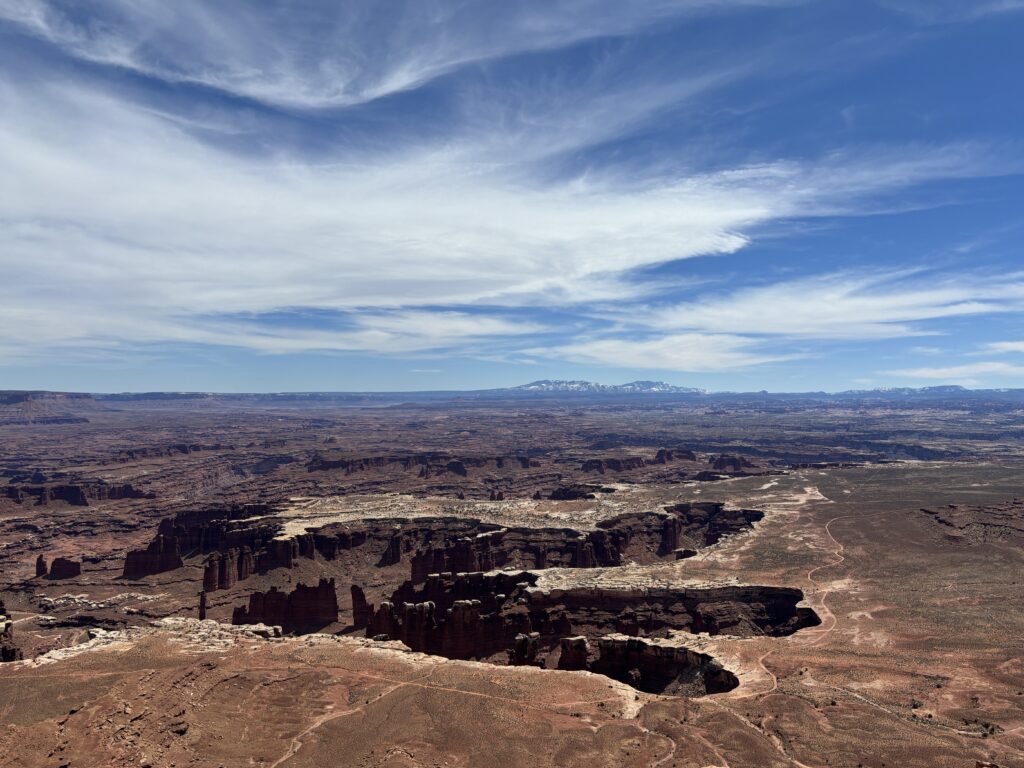
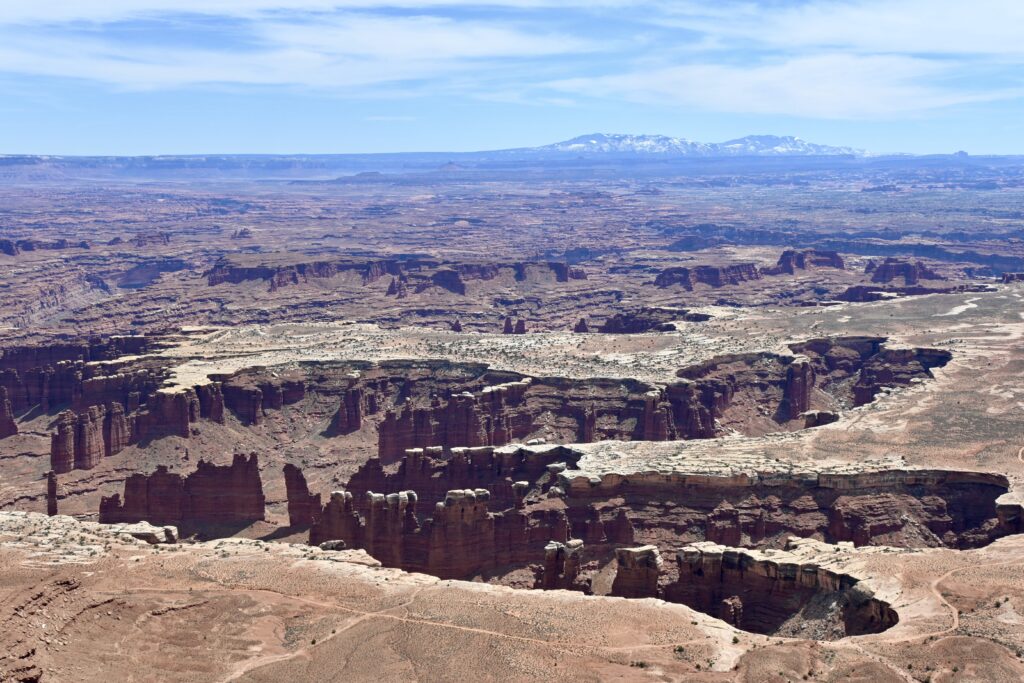
The Island in the Sky district of Canyonlands National Park had a surprising variety of sites. Obviously the canyons dominate the landscape, but the arch and dome were unique and unexpected additions to the scenery. After some challenging hikes at Arches National Park, we welcomed the fact that the main attractions at Canyonlands were lower effort but still high reward. You can do as much or as little as you want to here. From challenging hikes to roadside scenic overlooks where you can simply sit and appreciate the vast canyon sprawling before you, Canyonlands offers so many ways to enjoy its natural beauty.
